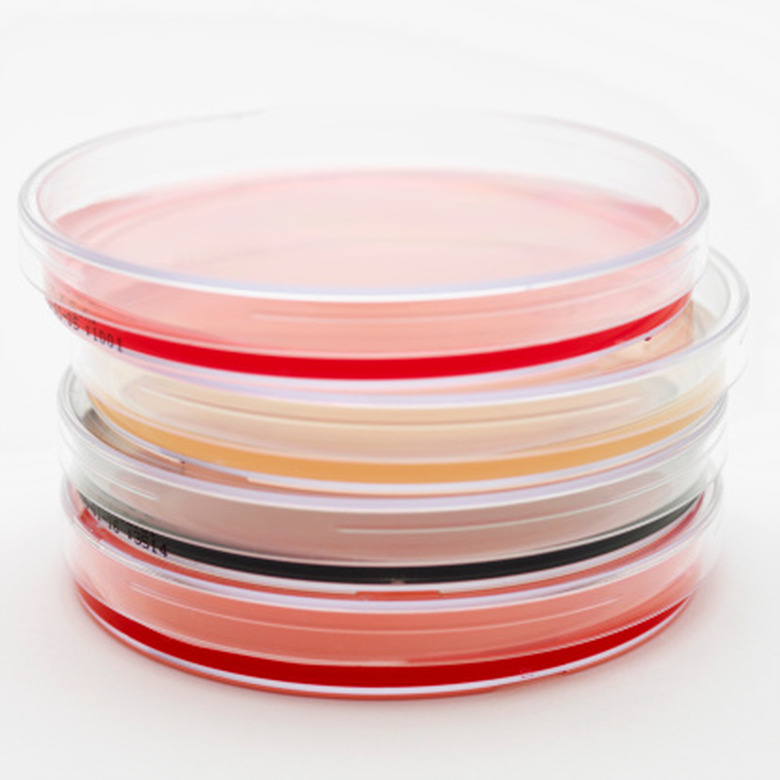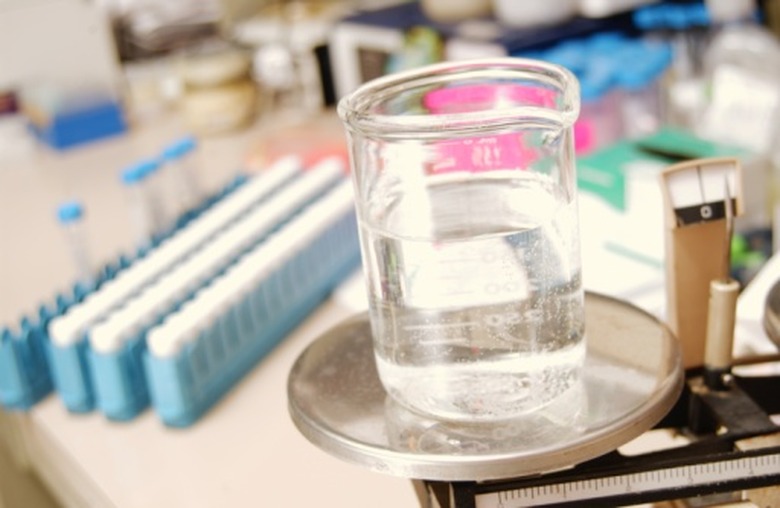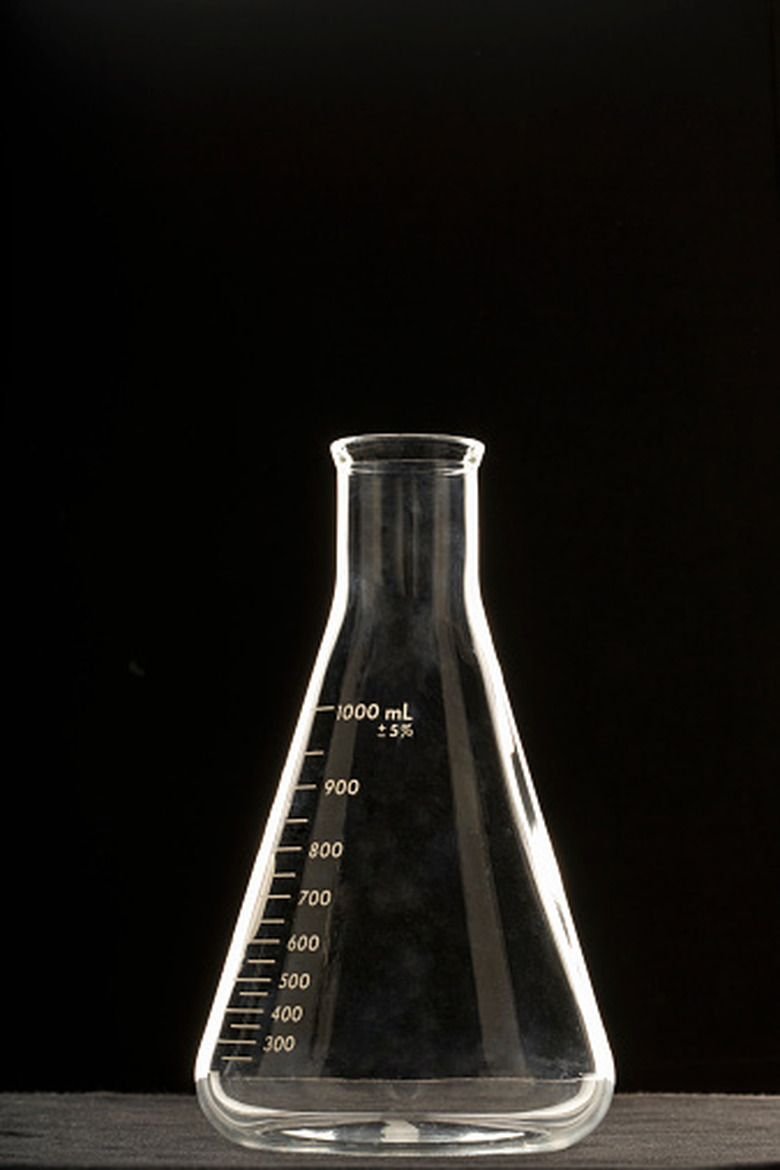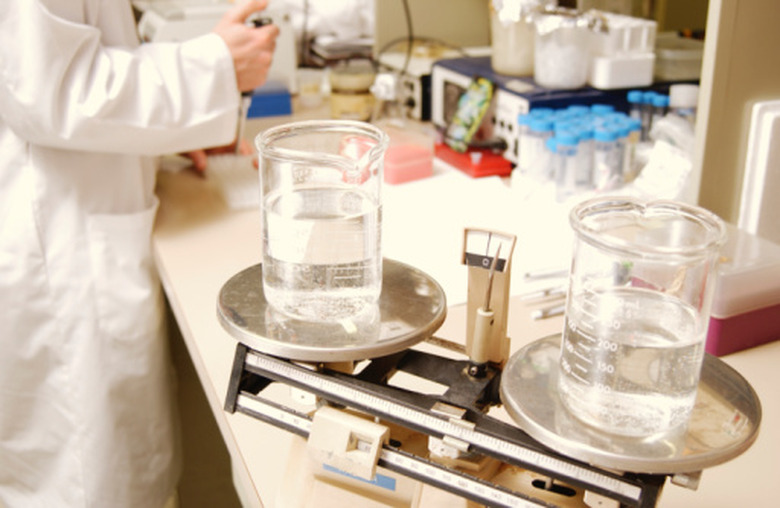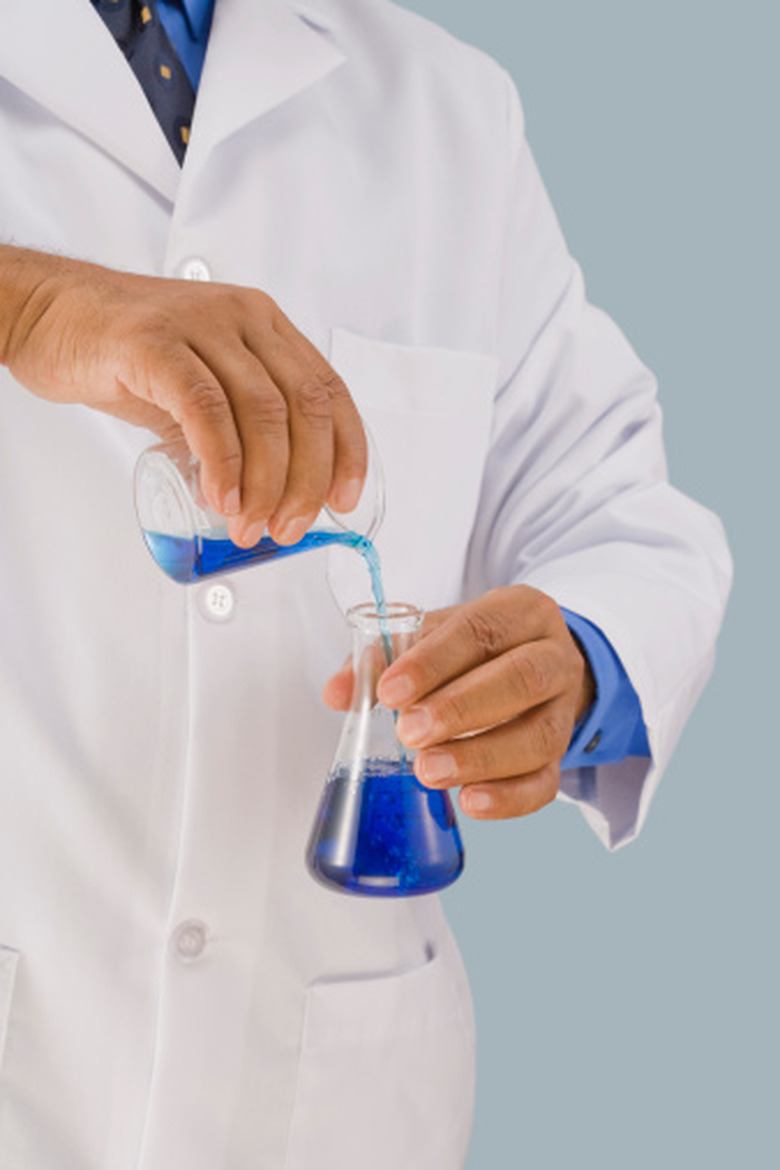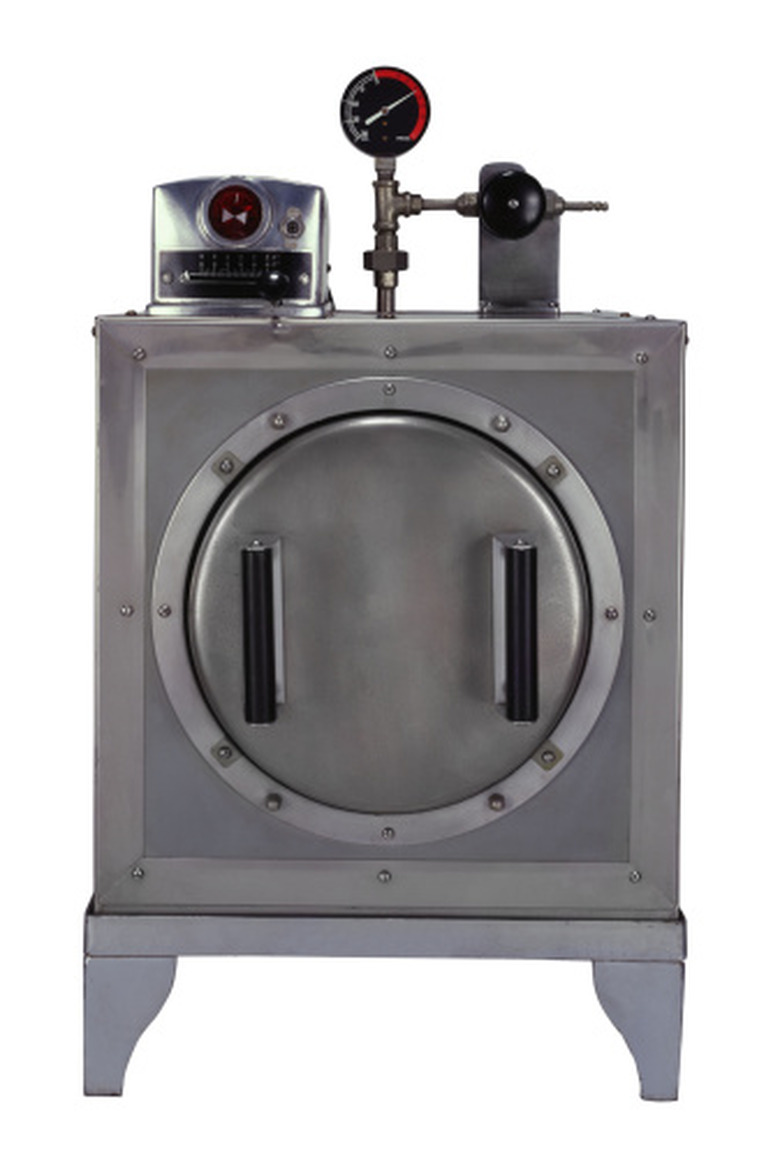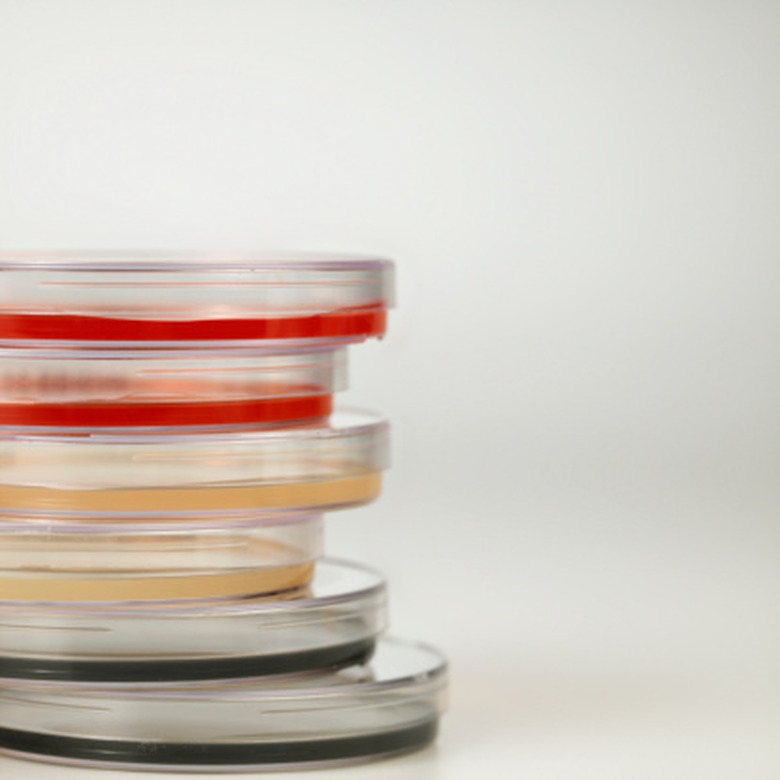How To Make Skim Milk Agar Plates
Skim milk agar plates are used to provide a nutritious medium for growing micro-organisms. Once prepared, the agar can be plated with a population of micro-organisms to test for the micro-organism's ability to digest casein protein. Casein is a large insoluble protein found in skim milk. As it is digested by an organism's enzymes, casein is broken down into small amino acids and peptides. Clear patches on the agar pate indicate regions where casein has been broken down. Skim milk agar is a relatively uncomplicated and inexpensive medium to use for an experiment like this. You can buy skim milk agar from lab supply companies, or make it yourself.
Step 1
Place a clean,dry watch glass on the scale and zero the scale. Measure out 5 g of skim milk powder. Transfer the powder from the stock bottle to the watch glass on the scale with a clean, dry lab scoop.
Step 2
Pour 50 ml of dH20 into one of the beakers. Add the skim milk powder and stir with the glass rod until it is completely dissolved.
Step 3
Tare a clean, dry watch glass on the scale. Measure out 1g of agar powder onto the watch glass using a clean, dry lab scoop.
Step 4
Pour 50 ml of dH20 in the other beaker. Dissolve the measured agar powder into it.
Step 5
Quickly pour the skim milk mixture into the agar mixture. Stir the mixture then autoclave at 121 degrees Celsius for 15 minutes.
Step 6
Pour the skim milk agar into the clean, dry petri dishes. Do not fill the dishes all the way to the top. Let the agar cool and solidify before you use it for your experiment.
Things Needed
- Agar
- dH20
- Skim milk powder
- Autoclave
- Empty petri dishes
- Paintbrush
- Scale
- Two 150 ml Beakers
- Watch glass
- Metal lab scoop
- Glass rod
Cite This Article
MLA
Duchesne, Annie. "How To Make Skim Milk Agar Plates" sciencing.com, https://www.sciencing.com/make-skim-milk-agar-plates-8305900/. 24 April 2017.
APA
Duchesne, Annie. (2017, April 24). How To Make Skim Milk Agar Plates. sciencing.com. Retrieved from https://www.sciencing.com/make-skim-milk-agar-plates-8305900/
Chicago
Duchesne, Annie. How To Make Skim Milk Agar Plates last modified March 24, 2022. https://www.sciencing.com/make-skim-milk-agar-plates-8305900/
